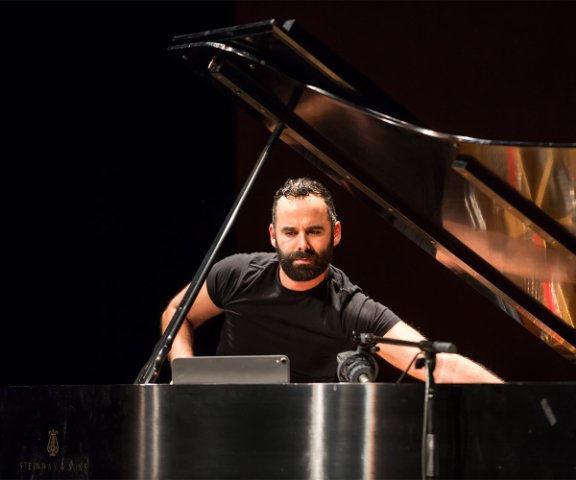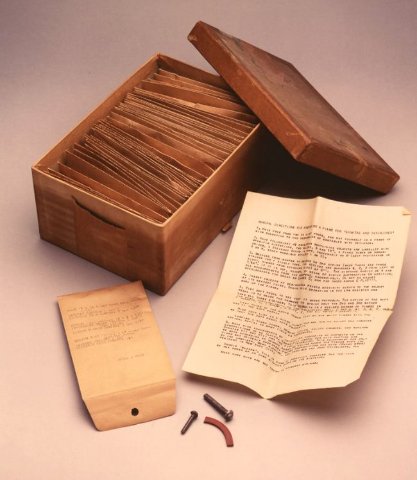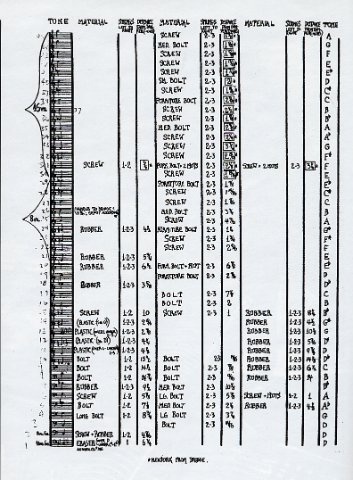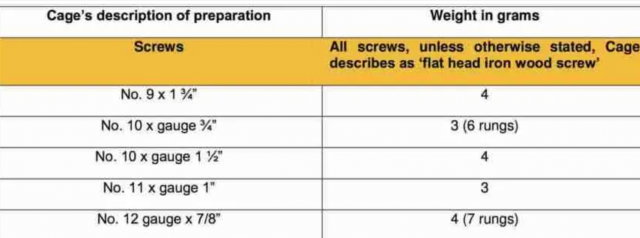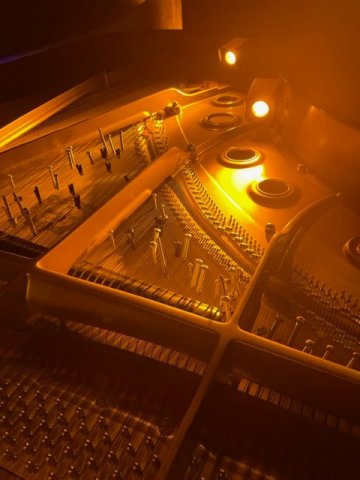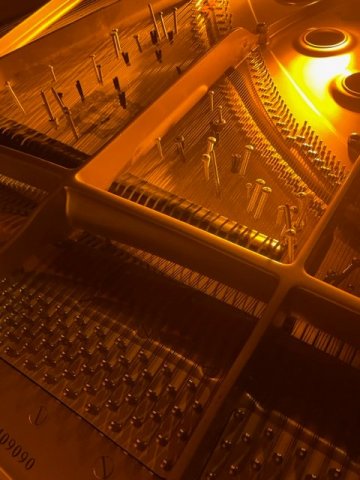Adam Tendler and Cage at the Crypt
Andrew Ousley's Death Defying Death of Classical
By: Susan Hall - Sep 08, 2023
Leave it to the brilliant impresario Andrew Ousley and his music series, Death of Classical, to bring us an incredible and surprising evening of John Cage music. Before Cage moved on to the concepts of indeterminacy and chance, he composed more conventionally arced works for the prepared piano, in which screws were systematically and specifically applied to some strings in a grand piano, Cage clearly began in one place and ended up in another. Sonatas and Interludes for prepared piano is a deliberate whole.
Deep in the caverns of the Church of the Intercession in upper Manhattan, music captured in stone archways reverberates in its own special way. Adam Tendler, the master of Cage’s Sonatas and Interludes for prepared piano, performed. Sounds emerged into the dark silence of the Crypt, barely lit by candles. The sounds are rich and detailed. They are also very present. The ambiance is minimal. Yet we are intimately involved with this music, full of surprises.
Tendler was working for a veterinarian in Los Angeles after graduation from music school, caring for Britney Spears' cat and Barbra Streisland’s dog, when he decided to learn the work page by page. Starting from the back end, he went forward. Each day he would test his memory. (See the illustrations of some of the tables of preparations for this work.) He worked on a silent piano. An ‘unprepared’ piano would sound all wrong. Remembering this work is a miracle. Now Sonatas seem second nature to him: one of the reasons the performance is so satisfying for the listener.
Tendler spent four days before his performance in the Crypt, prepping the piano and himself. His rhythms, percussive effects and delicious melodic repetitions are special because he is listening so carefully, undisturbed by the need to look at notes on a book or iPad.
Memorization lets Tendler offer a freshness that is unique. His bravura gestures with the left arm give us a wide variety of jabs, percussive staccatos and intriguingly short plucks. These complement the melodic phrases at the top of the keyboard. Although Cage may have abandoned harmony, there are many beautiful, brief melodies in the tinkling upper registers. Cymbal-like sounds ring out amidst the subtleties and nuances of the work.
Each Sonata has its own special quality. VI suggests the gamelin. VII and Interlude II have rich lower harmonics. You can almost hear the beat of the marimba. VIII has a surprising counterpoint in the central line. IX even has a silly tune that makes you smile. And so on to the conclusion, which is a farewell, to the performance and also to this style of composing.
Sonatas and Interludes is considered Cage’s greatest work. Cage was a pupil of Arnold Schoenberg, who made only one remark about his student: (Cage) “was an inventor of genius.” Cage liked this remark because his own father was an inventor.
Composer Morton Feldman suggested that Cage was a logical development of Schoenberg who had engaged in a lifelong exploration of 'variation.' Variations abound in Sonatas and Interludes. So do repetitions. If you think you’ve heard something before, you probably have.
What is striking about Adam Tendler’s lifelong obsession with this marvelous work is how he explores many different aspects of the work individually and yet keeps it whole. He performed what some call “Nows”--sounds of a present moment. We the listeners are surely present. Yet the overall effect is of a new instrument, more percussion than pianistic, chiming away.
The sounds that were new at the time they were composed are striking and add to the rich texture of the piece. Cage at first thought that by possessing these sounds he could repeat them. He discovered that every pianist is different from every other pianist and every piano is different from every other piano. Each time we hear the work, it will be different.
This also announces that the piano, used at first for both harmony and counterpoint, has now become a percussion instrument, joining the instruments of the future. Cage considered himself a percussion composer. Tendler plays Sonatas and Interludes like a melodic drummer.

